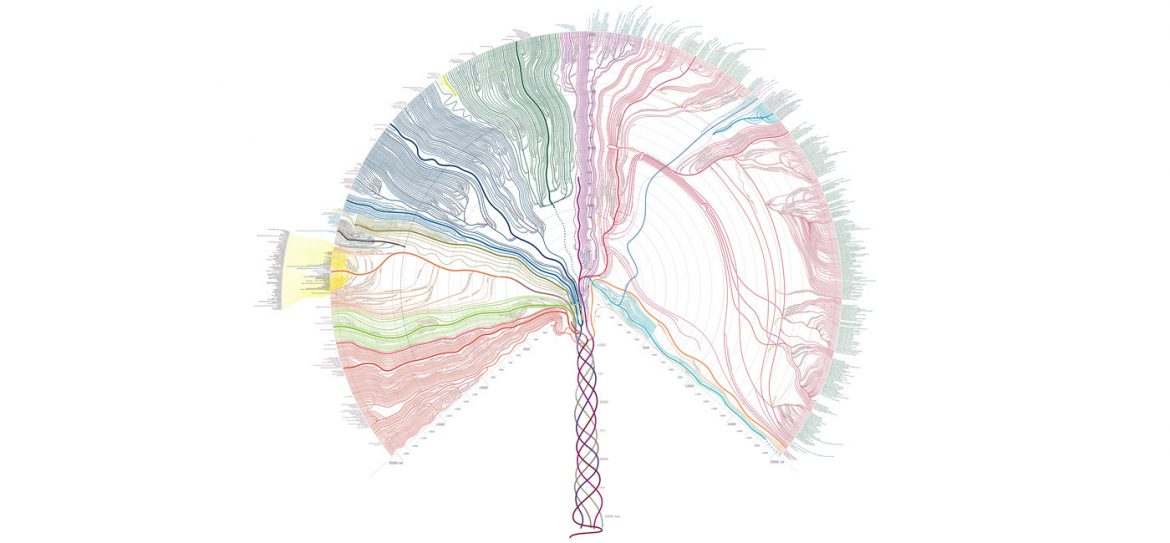At first glance it appears like some kind of giant family tree, and in a way it is. The family tree of world religions.
You won’t be able to tell anything from this tiny picture, so here are a couple of ways you can view it.
You can download the 37mb file here (the preview won’t look very good—you’ll need to download it).
Or if you want to view it online in Flash (sorry iPad/iPhone users) you can look at it here.
Certainly you’ll find all the major world religions and their many splits and sects. Missing are indigenous religions such as Native American traditions, various earth-based belief systems, and sorry, The Urantia Book does not show up. But the diagram is a remarkable view of how humans have socialized their responses to the divine—and split off whenever they were socially, politically, or theologically moved to forge their own path.

This intricate graphic is the brainchild of 40 Foundation, a Vienna-based charity, which, according to its website supports “independence of science and advocacy of multi-disciplinary approach to today’s key issues.” It was established in 2008 by Ukrainian-Syria businessperson/philantropist Hares Youssef. He is also the publisher of The Odessa Review.
@HaresYoussef tweeted recently: “The absence of the interest in the Values comes from the absence of the Values in the Interest.”
The many religions of Urantia are all good to the extent that they bring man to God and bring the realization of the Father to man. It is a fallacy for any group of religionists to conceive of their creed as The Truth; such attitudes bespeak more of theological arrogance than of certainty of faith. There is not a Urantia religion that could not profitably study and assimilate the best of the truths contained in every other faith, for all contain truth. Religionists would do better to borrow the best in their neighbors’ living spiritual faith rather than to denounce the worst in their lingering superstitions and outworn rituals.
The Urantia Book 92:7.3
